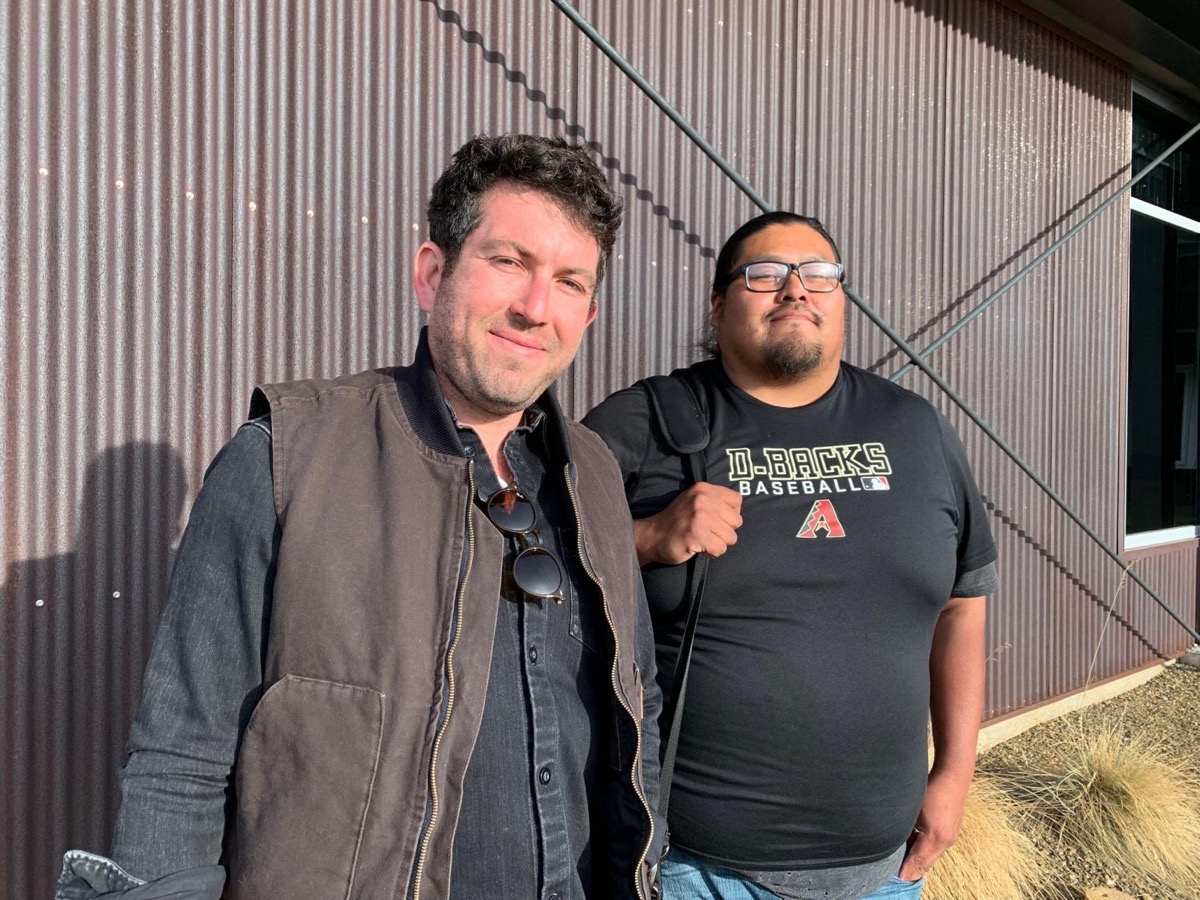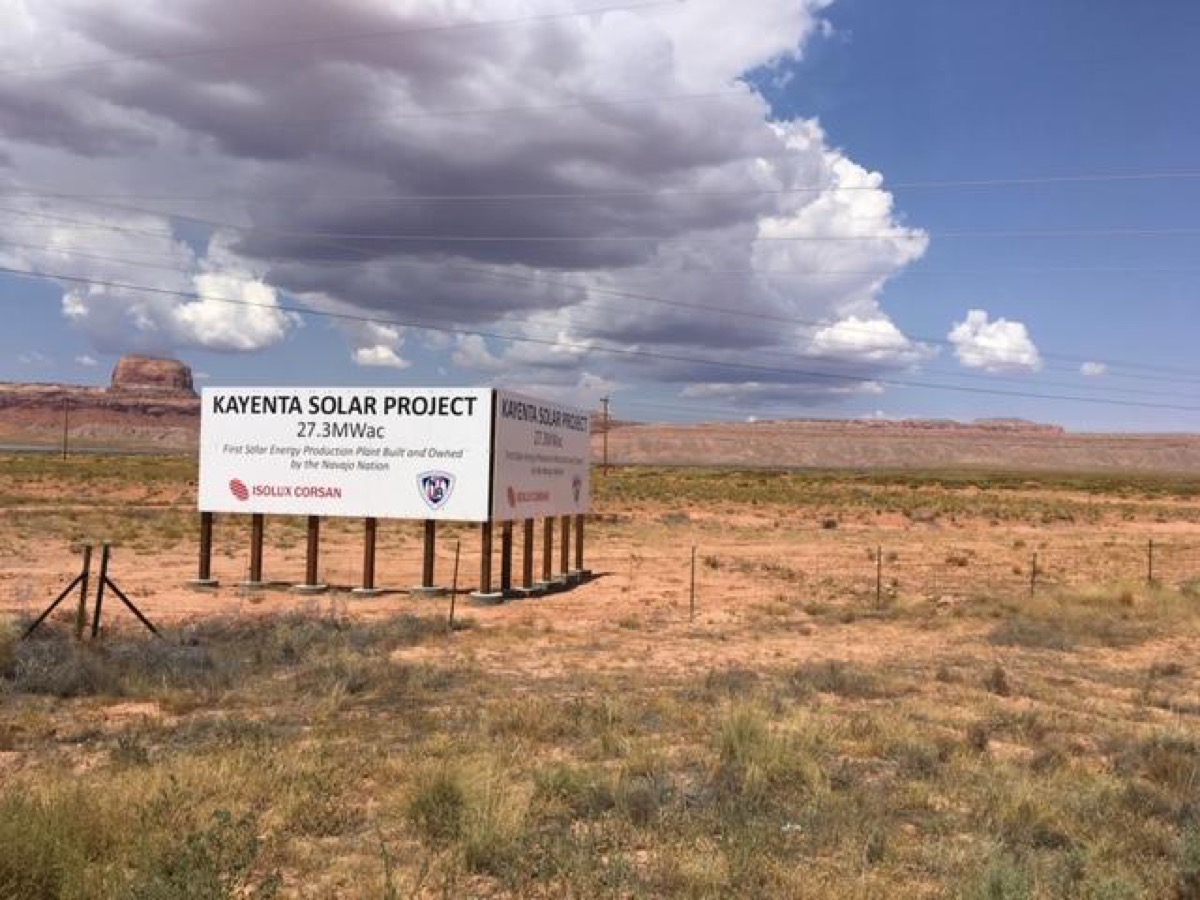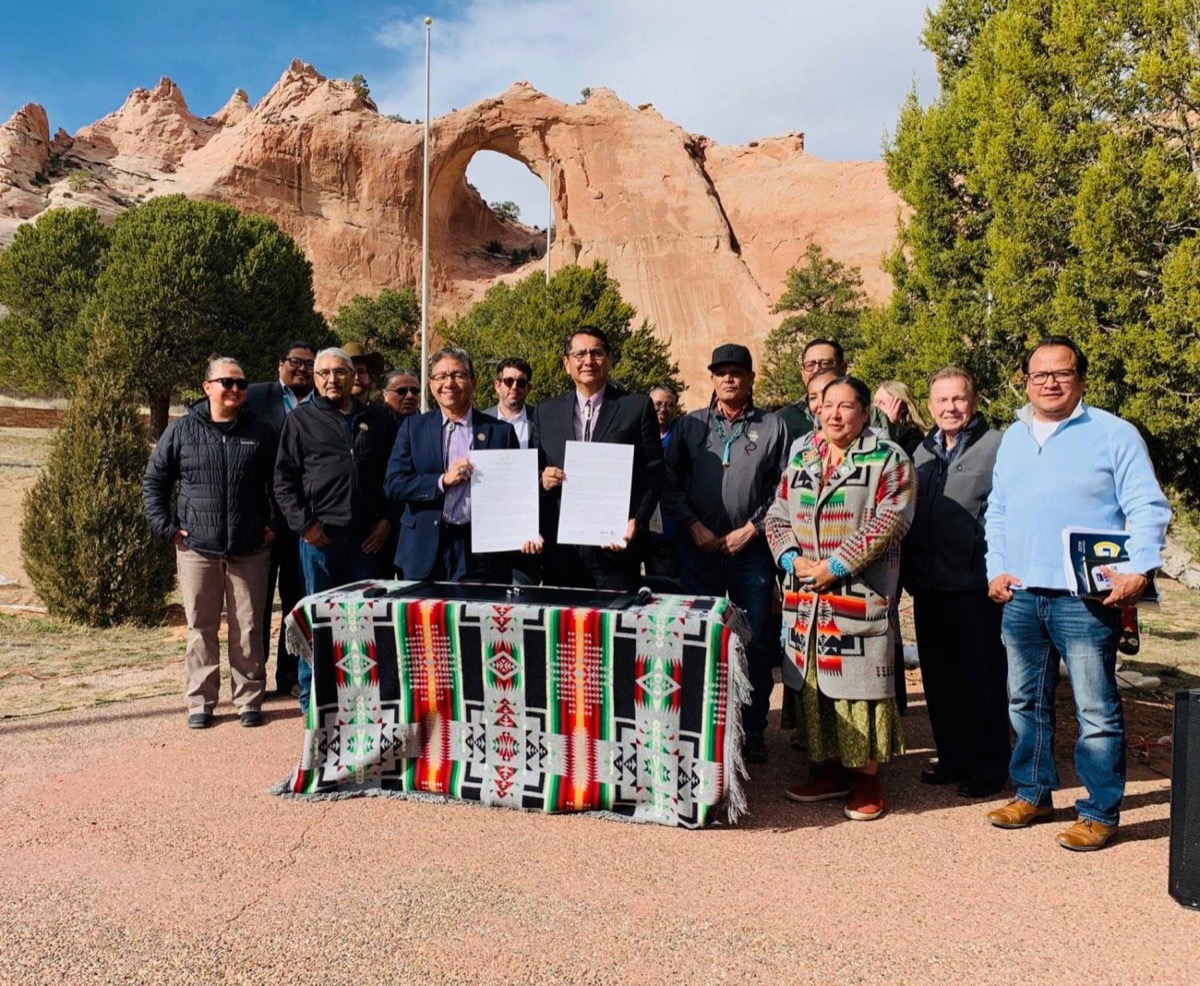Hoping For A Sunny Future, The Navajo Tribe Turns To Solar
4:08 minutes

 This segment is part of The State of Science, a series featuring science stories from public radio stations across the United States. This story, by Laurel Morales, originally appeared on KJZZ’s Fronteras Desk.
This segment is part of The State of Science, a series featuring science stories from public radio stations across the United States. This story, by Laurel Morales, originally appeared on KJZZ’s Fronteras Desk.
The Navajo and Hopi tribes have fought hard to hold onto coal.
Three generations have worked for the the west’s largest coal-fired power plant. The tribes have relied heavily on its revenue. So, when the Phoenix-based Salt River Project announced it was shutting down the Navajo Generating Station at the end of the year, the tribe scrambled to find a buyer or as a last resort purchase the plant themselves.
It finally came down to a vote late last month at a Navajo special council meeting. The lawmakers deliberated for eight hours.
“Are we ready?” Delegate Nathaniel Brown said. “Are we ready for the shutdown? I don’t think we are. We stand to lose a lot, our children the future generation.”
Delegate Charlaine Tso said she’s done with coal and its health impacts on her people. The plant is one of the country’s biggest carbon emitters.
“Shame on you,” Tso said. “Money money money. It’s replaceable. Enough is enough. This is the time that we’re going to take a stand that we’re going to come together for our people. I am ready to take on that challenge.”
Other delegates see the energy companies moving away from coal in favor of cleaner and cheaper energy sources.

The council finally voted against the purchase.
That decision marks the end of an era. Before coal, many tribal members worked with the federal government to blast uranium out of the Navajo Nation to make atomic weapons.
“The Navajo economy had been kinda built upon resource extraction,” said Brett Isaac, who grew up next to the Peabody Kayenta Coal Mine. “I still have an uncle that works for the Peabody Energy Company. I’ve had other uncles and cousins and friends and … You had a lot of people who that’s the only industry and job they ever knew.”
So, a decade ago when Isaac started installing off-grid solar panels in people’s homes, they all looked at him funny.
“But my family have more recently gotten more supportive with the way the world and global economy is moving towards a more renewable focus,” Isaac said. “They’re motivated by the fact I got in so early into it before it was cool.”
Now Isaac and a group of entrepreneurs have formed Navajo Power, a renewable energy company that’s trying to help the tribe shift away from coal. The tribe has built two utility-sized solar farms already. And it’s working on a third.

“It takes the benefit of something that’s abundant and converts it into something useable,” Isaac said. “So, that aligns a lot not only with Navajo philosophy, but a lot of indigenous communities about how you responsibly source things.”
There’s just one problem. The number of jobs at a solar farm can’t compare to coal. The plant and mine supplied 800 of the best-paying jobs on the Navajo Nation and many more support jobs.
Solar on the other hand requires hundreds of temporary employees to construct the farm, but after it’s built the sun does most of the work. That’s a tough sell to a tribe where half of the people are unemployed.
But Isaac envisions solar farms sprouting up faster than corn on the vast reservation. And says they could build a manufacturing facility to assemble the panels.
“It starts with embracing change,” said Navajo President Jonathan Nez, who’s on board with the idea.
He just signed a proclamation to make renewable energy the tribe’s top priority. But he’s also realistic. He knows the tribe has to invest in other economic engines, like tourism.
“People all over the world come to Navajo,” Nez said. “If we could keep some of our visitors here on the Navajo Nation a little longer, that’s going to bring dollars and jobs.”
He said ultimately they have to think about cleaner jobs and a cleaner environment for their children and their grandchildren.

Invest in quality science journalism by making a donation to Science Friday.
Laurel Morales is a reporter with the KJZZ Fronteras Desk in Phoenix, Arizona.
IRA FLATOW: Now it’s time to check in on the state of science.
– This is KERA, WWNO, Lewis Public Radio, Iowa Public Radio News.
IRA FLATOW: Local science stories of national significance. For decades, the Navajo tribe in New Mexico has relied on the coal industry for jobs and revenue. Three generations have worked for the west’s largest coal-fired power plant. But that, that’s all about to change, because at the end of this year the Navajo Generating Station will shut down as energy companies turn away from coal towards natural gas. So what does the future look like for the Navajo tribe that once ran on coal? Now they’re leaning to embrace solar energy and learning how to do that. Here to tell us more about that story is Laurel Morales, reporter with KJZZ’s Fronteras desk. Welcome to Science Friday.
LAUREL MORALES: Hi, Ira. How are you?
IRA FLATOW: Nice. Thank you, Laurel. So how did the new the Navajo tribe get mixed up in coal?
LAUREL MORALES: So northern Arizona, parts of New Mexico, and Utah are rich in uranium and coal. And during the Cold War era, mining companies blasted uranium out of the ground. Then in the 1960s, coal companies leased the land from the tribe and utilities to build the Navajo Generating Station, the west’s largest coal-fired power plant. And they took coal from a nearby mine, and for decades the extraction industry has provided hundreds of jobs for the Navajo. Brett Isaac grew up in that economy.
BRETT ISAAC: You know, the Navajo economy had been kind of built upon resource extraction. I still have an uncle that works for the Peabody Energy Company. I’ve had, you know, other uncles and cousins and friends. And you had a lot of people who that’s the only industry and the job they ever knew.
IRA FLATOW: So all of that is going away now. What’s going to happen to– How will the lives of the Navajo tribe change? The great thing about coal is it provided jobs, some of the best-paying jobs. But the not-so-great thing is it’s expensive and it pollutes. And the plant’s about 40 miles from the Grand Canyon. Many Navajo have complained about the health impacts, and not to mention that the power lines actually bypassed many Navajo for Phoenix and Las Vegas. One in 10 Navajos are still without electricity today.
LAUREL MORALES: So what’s happened is utilities have discovered that natural gas is so much cheaper than coal. And so the tribe initially looked at purchasing the coal-fired power plant, the Navajo Generating Station, but the cost outweighed the benefits. So the Navajo have a more progressive president and council these days. As one council member put it, it’s not all about the money. We need to think about the health and environment for our kids and grandkids.
IRA FLATOW: So they’re moving towards solar now. Can they can they create a sustainable situation with solar?
LAUREL MORALES: Yeah. Arizona is one of the sunniest states in the country. Several nearby states, including New Mexico and Nevada, are passing legislation to go carbon free in the next two decades, so the tribe has built two solar farms so far and has one more in the works. The Navajo president proclaimed renewable energy the Navajo nation’s top energy priority. But while it takes about 300 workers to construct one solar farm, after it’s built the sun does most of the work, so they’re looking at ways to create permanent jobs. You can’t compete against China in manufacturing solar wafers, but the Navajo could do solar assembly, taking the cells, putting the backing and panels together.
IRA FLATOW: That’s interesting. That’s the future. I want to thank you very much, Laurel, for taking time to be with us today.
LAUREL MORALES: My pleasure. Thanks so much for having me.
IRA FLATOW: You’re welcome, Laurel. Laurel Morales is a reporter for the KJZZ Fronteras desk.
Copyright © 2019 Science Friday Initiative. All rights reserved. Science Friday transcripts are produced on a tight deadline by 3Play Media. Fidelity to the original aired/published audio or video file might vary, and text might be updated or amended in the future. For the authoritative record of Science Friday’s programming, please visit the original aired/published recording. For terms of use and more information, visit our policies pages at http://www.sciencefriday.com/about/policies/
Katie Feather is a former SciFri producer and the proud mother of two cats, Charleigh and Sadie.
Ira Flatow is the founder and host of Science Friday. His green thumb has revived many an office plant at death’s door.